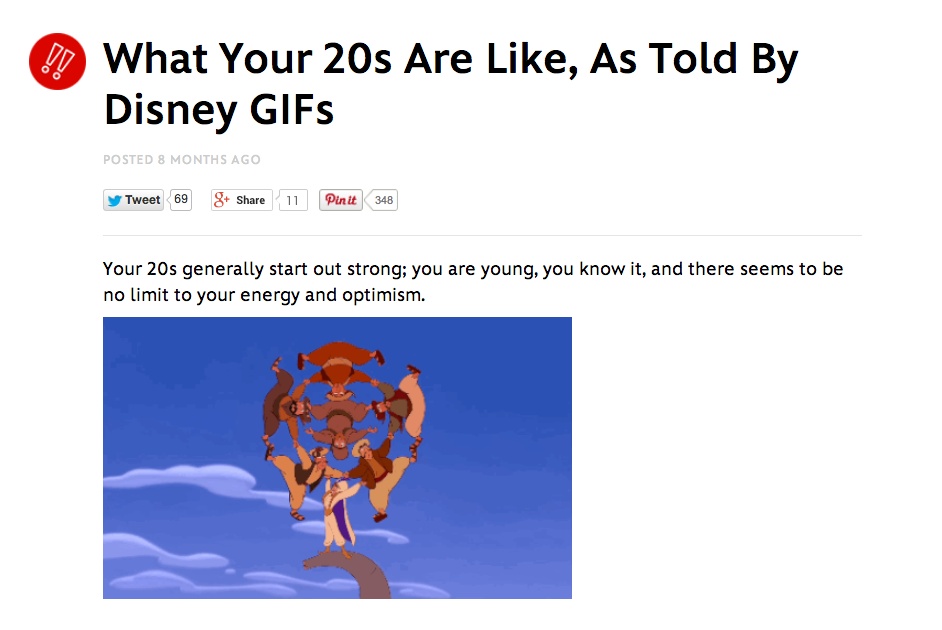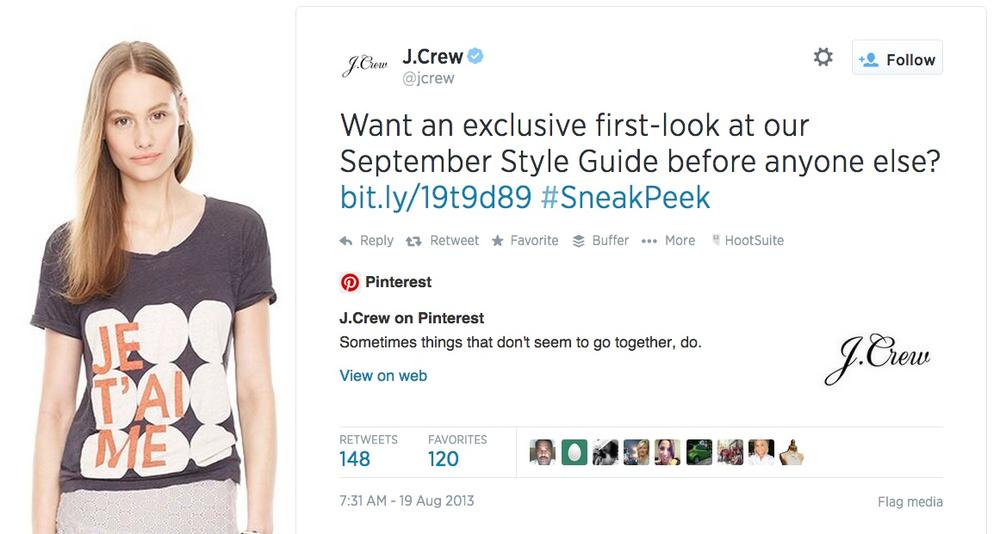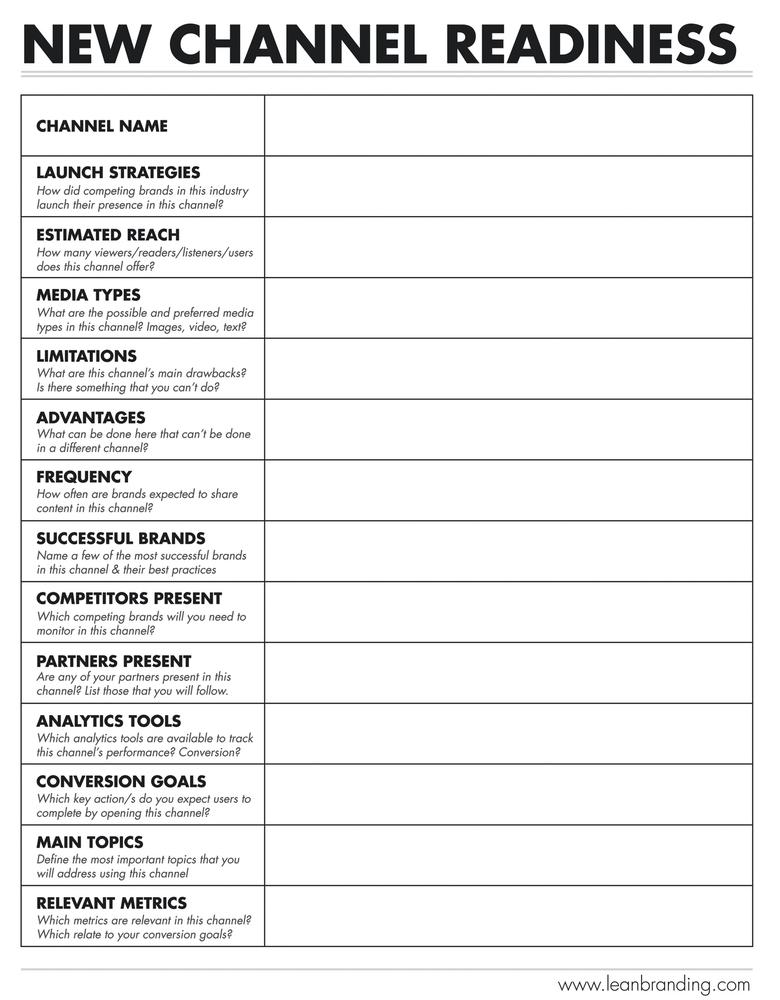Chapter 9. Brand Rechannel
Imagine it’s the year 1969. Elvis is king, Nixon is president, and you are grounded. While everyone else and their mom are figuring out a way to get to Woodstock, you are locked in trying to figure out how to build and sell this product. How can you get a large amount of people to know about the product, and hopefully buy? Well, it’s 1969, so let me show you your options:
Radio
TV
Phone
Print ads
Snail mail
Trade shows and conventions
How does that sound? No Internet, no email, no websites, no pay-per-click ads, no cellphones, and definitely no social networking sites. Now consider the overwhelming costs of running an ad on TV when it still reigned in households. Think about your idea, your budget, and the type of advertising that you might have been able to afford. Imagine the uncertainty of not knowing who saw your message, for how long, and how much that cost you. Other than reach approximations and vague sales impact estimates, your return on investment was a giant question mark.
Fortunately, it’s not the year 1969. Our communication channel options have never been as open, accessible, and measurable. Never have we been able to tap into specific niche communities like we can today. Does your brand need to talk to moms? There’s an online community for that. Are you looking for college students who might like your product? There’s a social network for that. Is your brand’s audience an elite group of vinyl record collectors? Trust me: there are hundreds of blogs for that.
But with choice comes responsibility. Each channel has its own formats, rules, and audience type. A radio listener cannot be addressed like a magazine reader, for instance. While a channel whose format is audio-based places a premium on your spokesperson’s tone of voice, a print ad demands more attention placed on imagery, copy, layout, and typography. Essentially, your brand story remains the same. The central message remains the same. What does change is the medium or channel that you are using to pass it on to the receiver and the way you adjust to its format. As I pointed out before, each channel comes with its own rules. Similarly, contemporary Internet-based channels create a wide array of possibilities that we need to prepare to tap into.
Back in Chapter 5, we saw how a single brand message (that makes part of your overarching story) could be tailored to fit some of the most effective contemporary channels: email, online advertising, and social media profiles, among others. Chapter 6 was all about measuring each channel’s effectiveness for reaching your conversion goals: subscriptions, signups, purchases, and so on. It is now the time to take a look at how you can switch from one brand communications channel to the next without changing the essence of your brand story. This “switching” is what we will call rechanneling from now on.
With so many channels available to communicate your brand story, it can get confusing. This chapter is about learning from the way others have switched channels successfully.
Rechanneling and Conversion
In Chapter 6, we saw how different communications channels can connect our customers with a desired action path and learned that the strength of that relationship is known as conversion.
Rechanneling involves changing the way in which we approach any of the existing communications channels to strengthen conversion. It also involves opening new (unexplored) ones with the potential to boost it.
With rechanneling, we are basically changing the way in which our brand is poured out into a world of consumer co-creation.
Let’s take a look at some brands that have rechanneled successfully, following one or more learning lessons arising from continuous measurement.
OhMyDisney: Same Magic, Different Content
In March 2013, Disney launched a new blog called Oh My Disney that looked unlike anything else we’d ever seen before.[74] At least from Disney.
For starters, Disney divided content into categories using common phrases drawn from Internet slang. Instead of the expected “Cute” or “Fun” labels, the site features “Awww,” “Whoa,” and “Yum.”
Content-wise, Disney’s interactive team turned over to memes and animated GIFs. These content types have been widely successful with Millenials, a generation that was starting to grow up and now has a unique channel to continue relating to the Disney brand story.
Disney’s social engagement strategist, Emily Brandon, said the following during an interview published in the Walt Disney Company blog:
We develop content with the audience in mind first. We constantly monitor their response and fine-tune our strategy to give them more of what they love in unexpected ways. This approach has proven to deliver high audience participation.[75]
Though the Disney brand story is essentially the same, the content was adapted to a new channel to cater to buyer personas that had “grown up.” Millenials were now looking at and enjoying Tumblr’s funny GIFs and Buzzfeed’s witty lists. Leveraging this opportunity, Disney opened Oh My Disney and rechanneled its brand story with a renewed content strategy.
Make it happen
Continuous measurement allowed Disney to realize that its buyer personas had changed. Now, not only did it have to cater to children, but to millennial men and women who were once these children and had grown up. In doing so, Disney opened a new brand communications channel that suited the interests and aspirations of this generational cohort. When was the last time that you rechanneled your brand message to adapt it to a changing audience? Have you taken the time to measure how this audience has changed over time and to strategize how to pivot in response to it?
The following are a few questions that you may want to answer before moving into a new channel:
What kind of language and tone is being used in the channel?
How can you tailor your brand message to fit this new channel’s possibilities?
What does this channel’s audience look like? What are the audience’s demographic characteristics?
How can you build initial traffic in this new channel?
Are competing or substitute brands already here? What are they currently doing?
If no competing or substitute brands are present in the channel, look at brands that target your intended audience. What are they doing?
How will you make it attractive for a brand follower to join you on this new channel, while still connecting over existing channels? What will differentiate your content in this channel from your content elsewhere?
J.Crew: Its Most Pinteresting Catalog Yet
In August 2013, fashion retailer J.Crew published this tweet:
J.Crew debuted in 1983 with the mailing of its first catalog,[76] while photo sharing site Pinterest took off in 2011. Countless communication channels can be opened in 28 years; just consider those that J.Crew built its brand upon: magazine ads, TV commercials, strategically designed storefronts, endorsements, and catalogs, among many others. It is fair to say that the J.Crew brand story was well positioned long before Pinterest’s very first sketches. Why, then, did the newly created social network catch the giant retailer’s attention?
Twenty-eight years is plenty of time for a brand to position itself consistently, but it is also an ample amount of time for its target buyers to change. To evolve in their needs, wants, and aspirations. To modify the way they shop, purchase, and share. With consumers’ behavior changing, J.Crew leveraged Pinterest as a new channel to reach them.
In August 2013, J.Crew uploaded its entire September Style Guide on a Pinterest board for the first time ever. Fifty-five pins with all sorts of outfits debuted for online brand followers. For 28 years, the print catalog had been the public’s first chance of looking at J.Crew’s upcoming collection. Ever since August 2013, the brand publishes its looks on a new pinboard to cater to the thousands of followers who go online to comment, like, share, and buy each of them.
As of summer 2014, J.Crew had over 150,000 Pinterest followers at pinterest.com/jcrew/.
Make it happen
J.Crew adapted an existing brand asset (its catalog) to an entirely new social media channel to amplify its conversion power. To do so, it had to adjust the catalog’s format to fit the dynamics of pinning. Which existing brand symbols could you adjust to a new channel that your target audience is engaging with? Are there documents, images, or other multimedia assets that you can adapt to an attractive new brand communications channel?
Consider the following examples of brand assets or events and the ways in which they can be adapted to fit different communication channels.
Asset/Event | Product catalog |
Offline | A print catalog |
Website | Online store with a shopping cart |
Blog | An embedded, interactive PDF file with links to individual products in your online store |
A link to your interactive PDF file and individual products in your online store | |
A photo album with products in your catalog and links to the website | |
A board dedicated entirely to listing the products within a specific catalog or season | |
Single product shots indicating where they can be bought; still-life print catalog images | |
Asset/Event | New product launch |
Offline | A reception |
Website | Feature the new product on your home page |
Blog | A blog post outlining the new product’s main features. Embed a simple yet effective explainer video. |
A link to your blog post, and a specific hashtag for the launch event attendees to use. Interactions with event attendees (retweets and replies). | |
A link to your blog post, a Facebook event for the offline reception, a link to your explainer video, and a photo album that showcases the new product’s main features in context. Mix product images with photos of actual customers using the product to solve a problem. | |
A board dedicated to showcasing what the new product’s users have accomplished. | |
Single, memorable shots from the offline event. An image of an actual customer using the product to solve a problem. If the customer has an Instagram account, make sure to mention her. Shorten your explainer video to a 3- to 15-second length and share it. | |
Asset/Event | Media coverage |
Offline | Clip/print the article and pin it or save it for your team. If you own a retail space, find a way to display recent press coverage to boost consumer trust. |
Website | Update your Press section by uploading the new piece. |
Blog | Quote a few words from the article and provide a link to the full text, ideally hosted by the media outlet that generated the piece. |
Pull out a quote from the article and provide a link to the full version. If the reporter or media outlet has a Twitter account, make sure to mention him. | |
Pull out a quote from the article and provide a link to the full version. | |
Pin the article onto a board dedicated to press coverage. | |
Post a single shot of the physical magazine or newspaper where the article was published. If it is not available (e.g., coming from an online magazine), style an image using a printout of the article or photographing the physical screen where you can visualize it (a laptop, smartphone, or tablet). |
Groove: Landing Page Fiasco
In 2010, a customer analytics company called Groove launched its first landing page. It “built page after page and section after section, forging on without testing any of them on a single user.” Cofounder Alex Turnbull, who has since opened up a blog documenting Groove’s mistakes, published the following thought:
Hindsight is 20/20. Hindsight can also be incredibly painful.[77]
After the first two weeks of launching the landing page, Alex looked at analytics data and found out that Groove’s conversion rate was less than a dismal 2%.
But it wasn’t just the design. We also suffered on the positioning end: because we had two features that we thought were equally valuable, we made the painful error of thinking that we could position ourselves as a “product company” offering a suite of support products, rather than simply a customer support company. Our messaging was scattered and our visitors were confused; nobody was sure what we actually did.
Realizing that if our conversion rate continued to suck this badly, we’d soon have to fold, I had a difficult decision to make. But looking at our metrics and visitor behavior, the only way out of this mess would be to abandon five months of painstaking (and painfully expensive) work.
So we swallowed our pride and put up a three-page (landing, pricing, and signup) site that was hyper-focused on the benefits of our helpdesk platform, and nothing else. No live chat. No ancillary features. The site took three days to build.
Conversions tripled overnight.
Make it happen
Groove was struggling with a brand positioning that did not resonate well with its audience. While the company believed its message to be accurate and attractive, its visitors found it confusing. By testing the performance of two different versions of their landing page, the Groove team was able to pinpoint what was failing in their communications strategy. The next time you measure your landing page for conversion, don’t fear failure. Fear myopia.
The effectiveness of brand communications channels to convert must be constantly measured and adjusted to reflect reality. While the strategies that you have designed for your different channels may look great on paper, it takes continuous measurement to optimize their performance.
Are You Ready to Enter a New Channel?
As you prepare to engage your audience using a different communications channel, examine the opportunities and challenges that the new space offers. Analyze what type of conversation is already taking place, as well as the behavior of brands that have already made successful use of the channel.
The following worksheet presents a list of essential questions to help you venture into new communications channels successfully.
You’ve Decided to Move into a New Channel; Now What?
Tapping into an unknown channel to share your brand story can be challenging. Once you have decided, based on the evidence available to you, that it makes sense to make the move, there are several tactics to ease the transition. The following are some ideas to get you started:
Launch a giveaway or reward campaign to encourage customers to connect with your brand in this new channel.
Publish a press release announcing your brand’s presence in the new channel.
Reconfigure all your online and offline links to reflect the existence of the new channel. Think business cards, landing pages, website, social networking sites, and email signature, among others.
Collaborate with individuals or companies already dominating the channel that you are trying to penetrate. Create a partnership that generates benefits for both brands. For more on brand partnerships, go back to Chapter 5.
Recap
With rechanneling, we are basically switching from one brand communications channel to the next to reflect changing market conditions. Throughout this chapter, we saw three different examples of brands that have leveraged new channels to reach a changing audience.
Though the Disney brand story is essentially the same, its content was adapted to a new channel called “Oh My Disney” to cater to buyer personas that had “grown up.”
With consumers’ behavior changing, J.Crew leveraged Pinterest as a new channel to reach them. In August 2013, J.Crew uploaded its entire September Style Guide on a Pinterest board for the first time ever.
After the first two weeks of launching their landing page, the team at Groove looked at analytics data and found out that their conversion rate was less than 2%. When they put up a much simpler three-page landing site, their conversions tripled overnight.
[75] Mariam Sughayer, “Disney Interactive Takes Next Steps in Social Media with Expanded Blog Network and Oh My Disney Editorial Site,” The Walt Disney Company blog, April 10, 2013, http://bit.ly/1pewfsX.
[77] Alex Turnbull, “3 Early Fails That Nearly Killed Our Startup,” Groove blog, October 10, 2013, http://groovehq.com/blog/early-fails.








